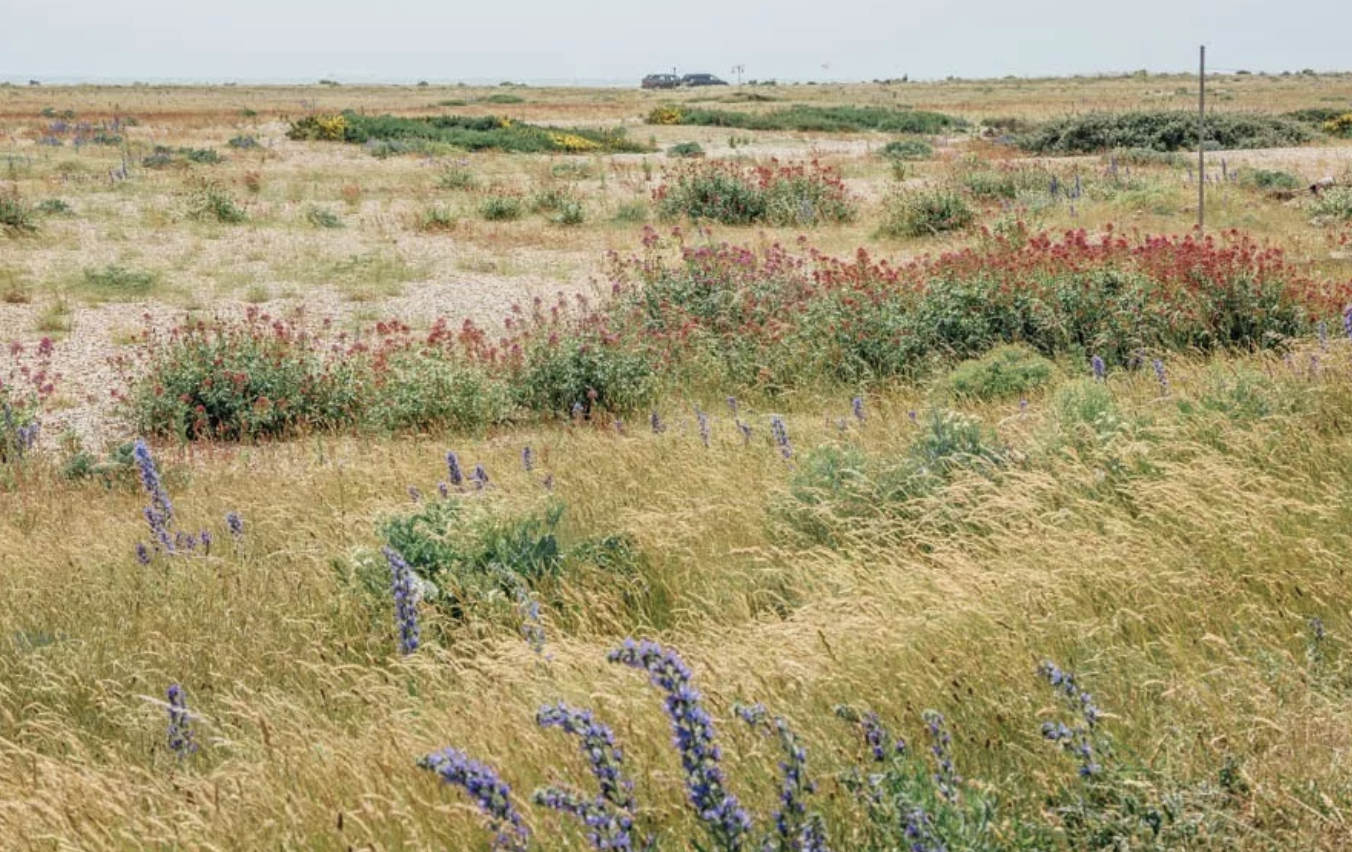Dungeness - a stretch of coast unlike any other
Normally I suggest going somewhere because it’s beautiful, or charming. I might recommend the glorious views, or attractive landscape. Dungeness, at the southernmost point of Kent, has none of those qualities.
Indeed, there will be some who’d call it austere. Or even bleak. And it would be hard to argue with them. But don’t let that put you off. Because more quickly than you expect, Dungeness reveals itself as a stretch of coast that will unexpectedly draw you in to its almost other-worldly appeal.
A stretch of the shingle beach at Dungeness, with a small cluster of traditional and modern resident’s houses backing on to it
Let’s start with the fundamentals - Dungeness is not only one of the largest areas of shingle in the world, it is also, according to the guide on sale in the shop at the railway station (more about the railway later, it’s both unusual and delightful), the only desert in the UK.
Then there are the power stations
Oh, and then there’s the not inconsequential matter of the two huge nuclear power stations that dominate the landscape and the skyline (known, inventively, as A and B, the former has been decommissioned but the latter is still very much in operation and has a visitor centre and a pre-bookable tour). Pretty they most definitely aint.
But Dungeness is also a nature reserve that is home to over 600 wild flowers - which is, astonishingly, a third of all the plants found in the UK.
A third of all the plants in the UK can be found at Dungeness
It’s a mecca for bird lovers, with a RSPB observatory and two hides on the beach. And apparently, it’s also one of the best places in the country to find a wide variety of bees, moths and beetles (I can only report that from research rather than personal experience, I’m not all that sorry to say in relation to the latter two.)
People live here too
The reserve is home to a small community of residents, many of them fishermen whose boats lie on the beach and who live in low-slung, weatherboard cottages. But alongside them in the scattered clusters of houses is the odd unexpectedly modern home, that somehow remains in keeping with its weathered neighbours.
A lot of lighthouses through history
The constant movement and build up of the huge area of shingle means that this stretch of coastline is actually also constantly changing, with the beach expanding at the rate of about a metre a year. The result of this is that over the centuries three of the five lighthouses built here since the early 1600s ended up too far from the sea to be of use to the ships navigating this notoriously dangerous stretch of coast.
The fourth of those, known as The Old Lighthouse, was decommissioned when it was inconveniently obscured from a swathe of shipping when the power station was built in the 1960s. Oops. Originally built in 1904, it’s now open to the public.
The Old Lighthouse towers over it’s nearby neighbours’ homes, including one of the more modern style houses
If you’re up for the challenge of climbing the 169 steps, (the climb is broken by mezzanine floors, each with an informative exhibition), navigating the ladder to the top, lamp floor and clambering through the low hatch to the external platform, 46 metres above ground level, you’ll be rewarded with spectacular views of the reserve, the coastline, and not forgetting those two hulking nuclear power station buildings.
Crouching is required to get through the hatch opening on to the external platform at the top of The Old Lighthouse. It’s a bit of a squeeze but worth it for the views
The otherness of this strange, and strangely beguiling, place has made it something of a mecca for artists, drawn by its austere shingle landscape, the quality of the light and the wide sweep of the Channel sea vista.
As a result, as you wander round, you can find yourself stumbling across a tiny art gallery or studio selling original work by local painters, printmakers, and sculptors. Quirky Dungeness Open Studio, very near the lighthouse, has two little shed galleries showcasing work from various artists.
The first of the two tiny shed galleries at Dungeness Open Studio
But be sure to go beyond them to The Laboratory at the back for a fascinating glimpse of the tools and mechanisms they use to create their beautiful pieces..
The tools of the artists’ trade. And the music to go with them.
Another sort of artist - film director, author and keen gardener Derek Jarmon - made his home here and his distinctive black cottage with its bright yellow window frames and garden designed with driftwood and native plants, is easy to spot from the road into the reserve.
The late Derek Jarmon’s distinctive home in Dungeness
When you’ve done with exploring the nature reserve and it’s odd delights, there’s another local experience you shouldn’t miss.
The Romney Hythe and Dymchurch Railway runs the most complete collection of one-third size steam trains anywhere in the world. These diddy trains (the scaled-down carriages are just two seats wide) run on tracks just 15 inches apart.
One of the beautifully maintained Romney Hythe and Dymchurch Railway’s diminutive steam trains
The carriages on the one-third size steam trains are just two seats wide.
The track snakes through the reserve and along the coast, from Dungeness to Hythe, passing through villages, often inches from the back gardens of the houses, along the way.
There are six stops and the whole journey takes an hour each way. But you can get off at any stop and I chose to only go as far as New Romney (about half way) where there’s a terrific model railway exhibition at the station. It’s a great place to while away the time before your diminutive train pulls in to the scaled-down station (which also has a - full size - cafe and a shop) for the return journey to Dungeness.
Do not adjust your set - that really is the size of the engine
Feeling a bit like Gulliver in Lilliput as I clambered out of the tiny carriage seemed a fitting end to a strangely discombobulating day. Dungeness isn’t like anywhere else I’ve ever been. But it beguiled and intrigued me and I’m happy to have seen it and I guarantee you will be too.
Find out more about what else there is to see in Dungeness and the facilities in the Nature Reserve, which include two pubs and a fish restaurant, here
Where’s the most unusual place you’ve ever visited?
Other posts you’ll enjoy














